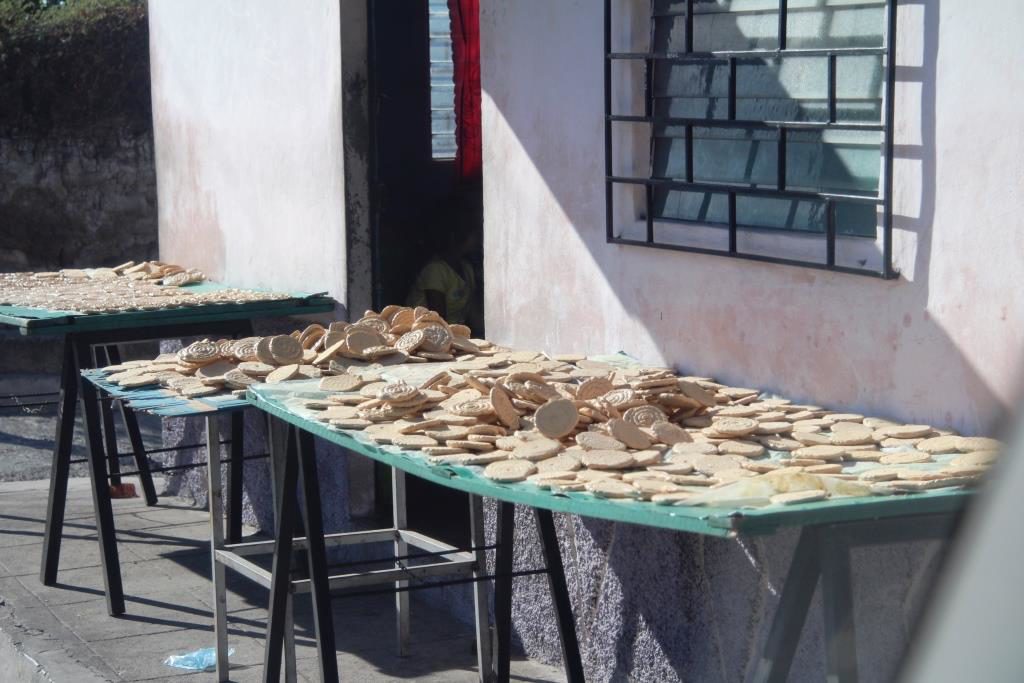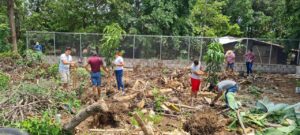“But damn it! They’re taking my work away from me! And no matter what they say, they’re invaders. They’re not from here! They’re itty bitty things made of plaster, baked and finished with enamel. They bring them by boat, so they probably turn pale from being seasick.” These are the words of an artisan, whose hand-crafted wooden sculptures were being replaced by cheaper, inferior, foreign replicas. (from Oscar Romero – Memories in Mosaic by Maria Lopes Vigil, p. 76.)
It wasn’t until we were near the end of the MUNA (Museum of Anthropology) in San Salvador staring at a large map of El Salvador with each local craft unique to that specific area duly noted by its specific region of origin that it dawned on me. Wow! There are an amazing amount of varied crafts in this country and each is associated with a specific area depending on what is native to it. – clay, cotton, wood, Tagua nut.
There are the hand-made cotton and hemp hammocks made in areas growing the fiber. The weavers sell them in markets and on street corners. You do not go into a Salvadoran home and NOT see hammocks. These comfy nets are the standard Salvadoran indoor/outdoor functional furniture used for an afternoon siesta for workers or nursing moms. They double as beds in the campesino communities stretched out at night and can be pulled away and stored easily during the day.
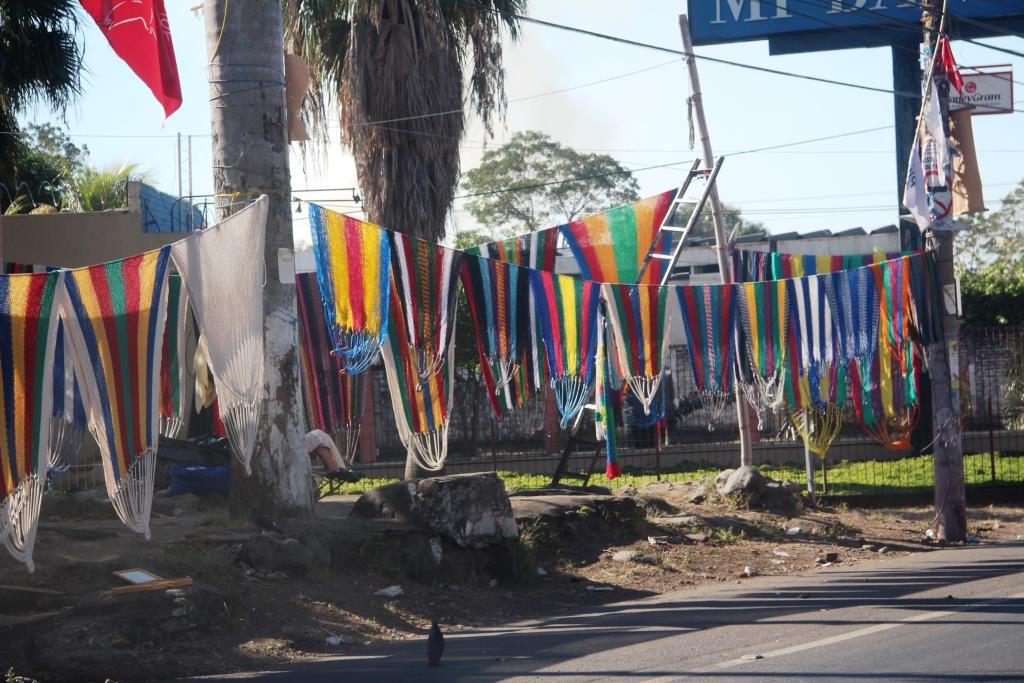
In other locations where the Pipil Indians settled loom weaving has been passed down from one generation to the next and still done, taught, and sold.
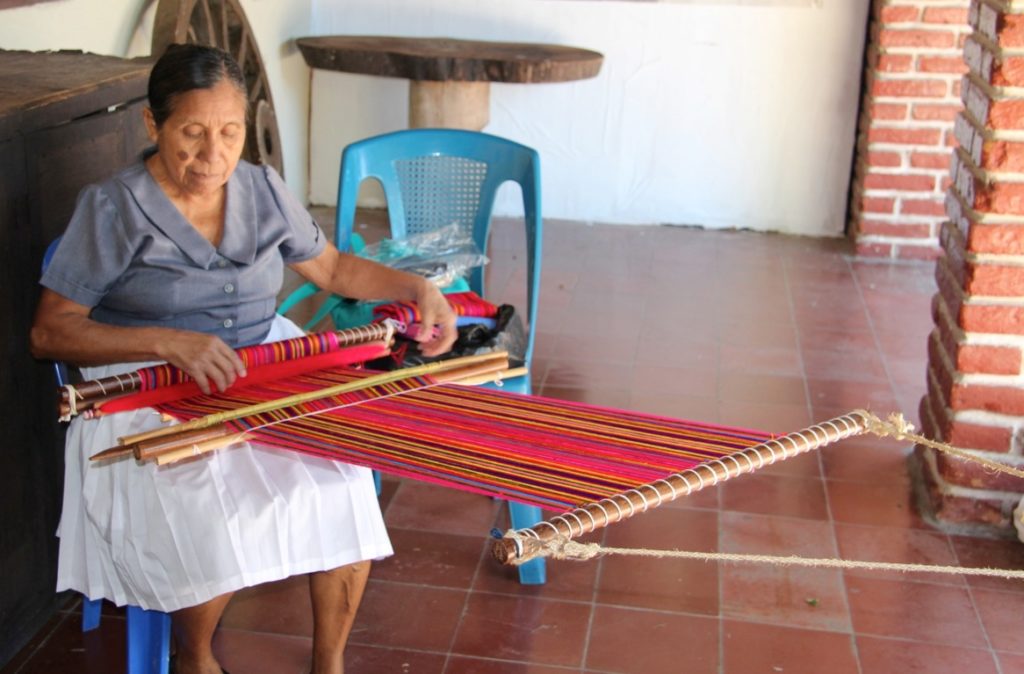
Hand embroidery is common within some of the Christian-based communities in many areas. The themes include brightly colored little houses and items from nature are on clothing, aprons, tablecloths, napkins, table runners, etc.

Ilobasco is known for its sopresas (surprises) of clay egg figurines that open with various tiny figurines inside. Some are religious scenes; others are naughty or fun depending on one’s taste.

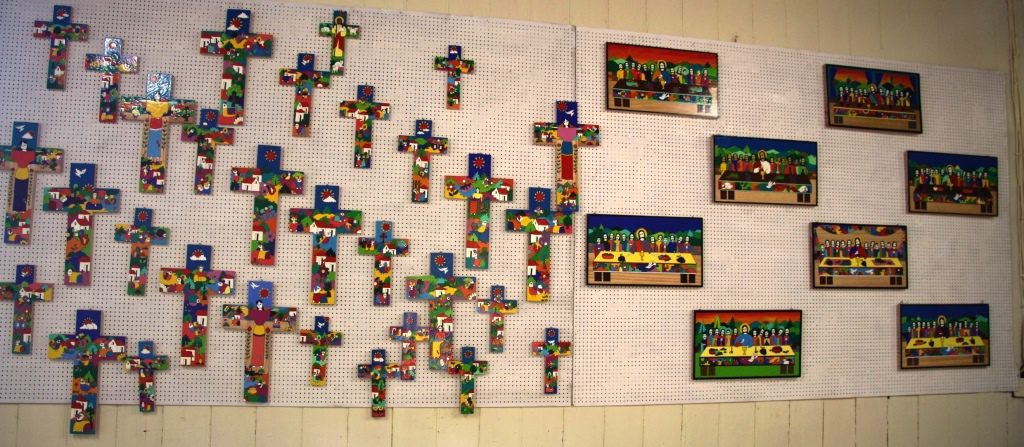
La Palma in the northern part of Chalatenango is the birthplace of the brightly painted and varnished wooden art such as crosses and other wooden items with the characteristic stylized look.
Tagua nut (vegetable ivory) crafts are sometimes fashioned into jewelry or small Nativity sets.
“In the 1700’s & early 1800s El Salvador’s leading export crop was the dye indigo cultivated by Indian Mestivo laborers working under miserable conditons.” (Enrique Alvarez Cordova, John W. Lamperti, p. 34). Although indigo no longer plays a role in large commercial use, pockets of artisans in the country continue to produce indigo garments (shirts, dresses, aprons) that are strikingly beautiful.

Modern cottage industries include jewelry, quilting, photography, and coffee production. Even some of the specialized foods such as these Batido sugar cane cookies sold in markets and along the roads could be considered cottage industries.
